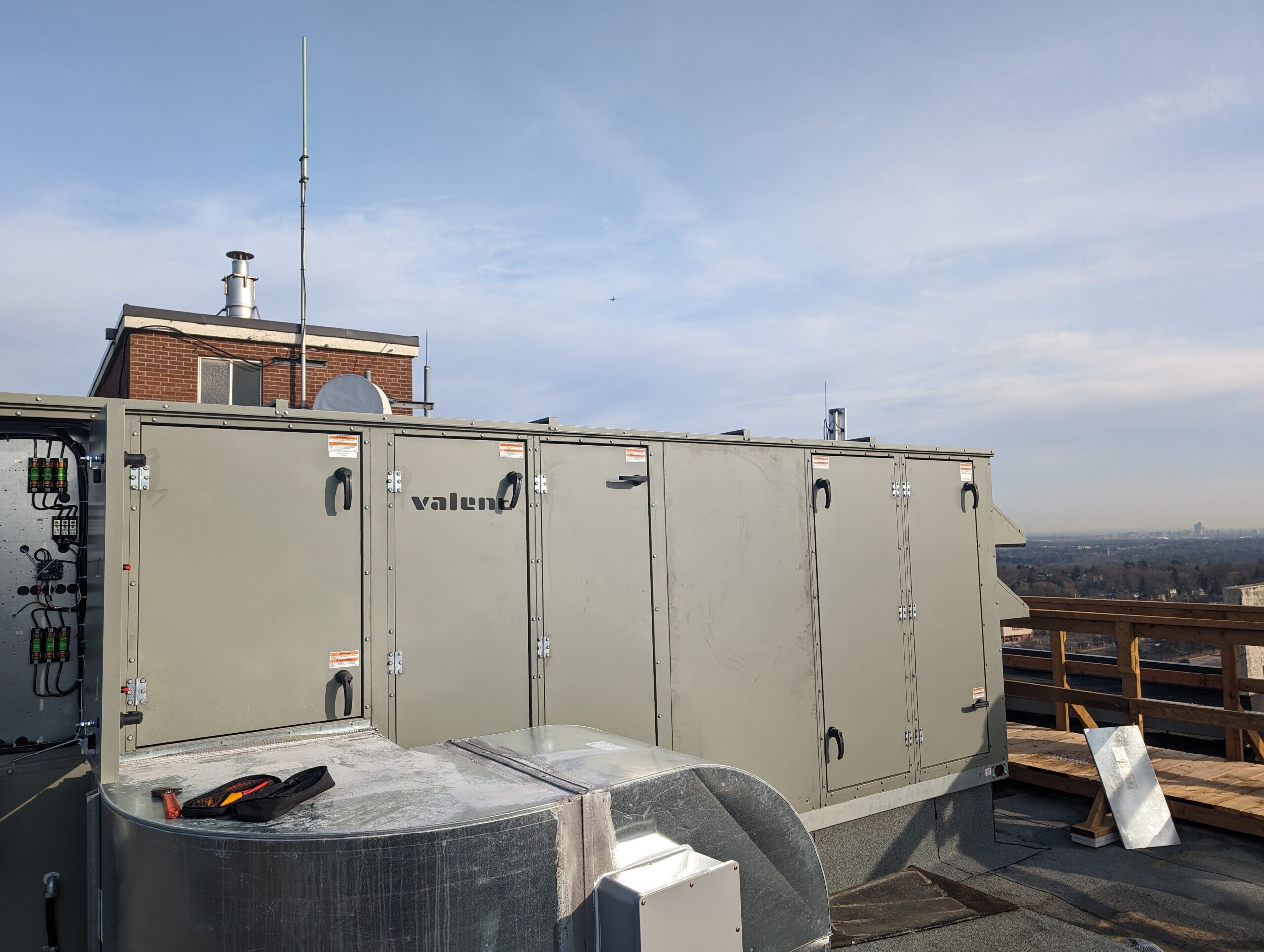In response to the lessons learned during the pandemic, ASHRAE introduced Standard 241, a game-changing guideline designed to improve indoor air quality and reduce infection risks. This standard provides a framework for assessing air cleaners, defining safety measures, and calculating the equivalent clean air (ECA) needed to keep spaces healthy.
What Does Standard 241 Cover?
The standard introduces the concept of Infection Risk Management Mode (IRMM) – a building mode designed to improve air quality during heightened infection periods. It outlines how air cleaners, filtration systems, and outdoor air can work together to achieve an ECA value that meets safety requirements for various building types, from classrooms to healthcare settings.
Key requirements include:
– Minimum Filtration: MERV 11A or higher, often paired with advanced systems like VRF and air source heat pump solutions for added efficiency.
– Air Cleaner Safety: Products must pass stringent safety tests, including no ozone emissions (UL 2998) and no excess formaldehyde.
– Testing Rigor: Air cleaners must undergo third-party, triplicate testing in large chambers, with average results determining their ECA rating.
The Impact on System Design
Standard 241 doesn’t replace existing codes like ASHRAE 62.1 but builds on them. Engineers must still meet baseline ventilation rates but can supplement outdoor air with cleaned air to reach the ECA target. For example, a classroom may require 40 CFM of clean air per person – far more than standard ventilation can supply. By upgrading filters, integrating AHU air systems, and adding certified air cleaners, designers can achieve compliance without massive energy costs.
A Tool for Smarter Decisions
ASHRAE has provided a calculator to help engineers balance ECA targets with economic feasibility. It allows designers to model scenarios, compare costs, and make informed decisions about adding air cleaners, upgrading filters, or increasing ventilation. For example, they can explore whether an air-to-air heat pump or hydronics system makes the most sense for a given application.
Confidence in Clean Air
By setting clear safety benchmarks and standardizing performance testing, Standard 241 gives building owners, designers, and occupants confidence in the effectiveness of air cleaning technologies. It’s a major step toward creating healthier indoor spaces – not just during emergencies but every day.
For those designing or upgrading commercial HVAC systems, adopting Standard 241 now can improve safety, enhance occupant well-being, and future-proof buildings against the next airborne threat.
Want to learn more? Reach out to O’Dell HVAC Group for guidance on selecting compliant products and designing systems that meet Standard 241 requirements – whether you’re upgrading your AHU, considering a heat pump for cooling, or addressing air quality in high-demand areas like commercial kitchens with a cooking exhaust fan or commercial hood exhaust.
This blog was written in collaboration with our partners at GPS Air, a leader in Enhancing Indoor Air Quality and Energy Efficiency. Their expertise in air purification technology and commitment to safe, effective air cleaning played a key role in shaping our insights on ASHRAE Standard 241.






